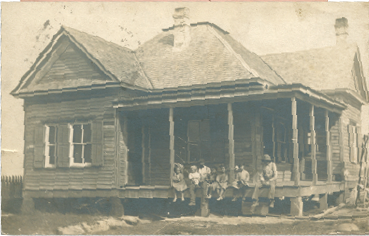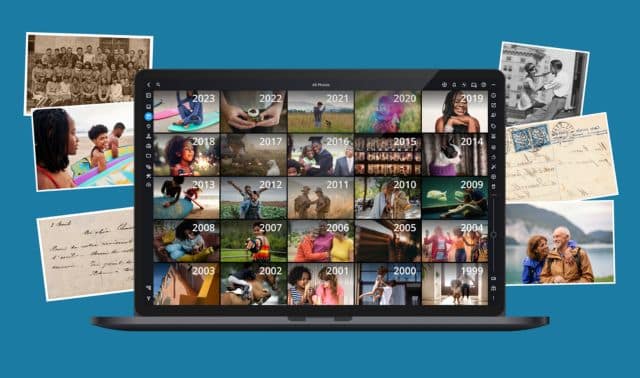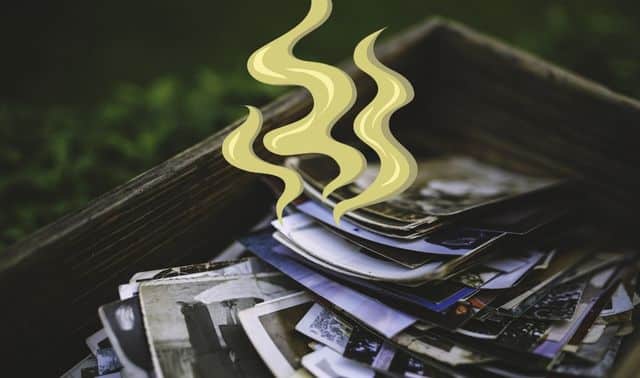Sign up for the Family Tree Newsletter Plus, you’ll receive our 10 Essential Genealogy Research Forms PDF as a special thank you!
Ask the Archivist
Q. I found an album of 40 or 50 old postcards that belonged to my aunt. Most were sent through the mail. Should I take them out of the album to better preserve the handwritten correspondence?
A. Your album is a family historian’s dream: potential genealogical nuggets and social history all in one package. Your instinct to preserve the fragile handwriting and paper is a good idea, and this won’t be a difficult or costly project.
First, evaluate the overall condition of the album and its contents. Scan or photograph each page to create a digital backup that preserves the original order and context of the album page. If the book is falling apart or the cards appear damaged, you may want to “recreate” the album using your scans and archival materials. You’d read and share the recreated album, and keep the original in archival storage. Alternatively, remove the postcards and place them in acid-free, photo-safe plastic sleeves for further study and enjoyment.
If, however, you want to keep the book intact, here’s how to to offer a bit more protection to the contents:
- Protect the postcards from abrasion and create an acid-free barrier between the pages by interleaving the pages with archival interleaving tissue (see the box, above). Be careful not to overstuff the album, which creates stress on the spine. If the album is designed with an adjustable binding, you can loosen it to accommodate the interleaving. Otherwise, try interleaving every other page to reduce bulk.
- Examine the reverse side of the cards for family history information. First, wash your hands. Next, working on a clean, flat surface, carefully remove a postcard. While it’s out of the album, scan the card, front and back, in full color at a high resolution, at least 600 dpi (dots per inch). You also could take a photo of the card with your digital camera.
Examine the digital image and transcribe the writing. Look for names and nicknames, addresses of the sender and recipient, dates, family news and other family history clues. The photographic fronts of the cards may offer views of small towns and long-gone buildings. Cards with a picture on one side and “Post Card” label on the reverse, with space for the address only (no handwritten message) are among the oldest styles. Date postcards using the stamp and postmark, as well as the tips here.
Interleave It at That
Old albums and the photographs inside them don’t always play well together. Acids from paper made of wood pulp can stain and damage adjacent photos and ephemera through acid migration. Inserting sheets of thin, acid-free archival paper, called interleaving tissue, between the album pages provides protection from abrasion.
Interleaving tissue is available buffered and unbuffered. Buffered paper contains an agent such as calcium carbonate to neutralize the pH level of acidic papers and protect photos against acid deterioration. The buffering agent can cause pencil and charcoal to change colors, so it’s better to use unbuffered interleaving tissue if you’ll place it against the handwritten side of the card. Interleaving tissue and other archival storage materials are available from suppliers such as
Gaylord Archival and
Hollinger Metal Edge.
Postcards on the Edge
Proper care and storage will extend the life of your loose postcards for future relatives to enjoy. Follow these pointers:
- Digitize each card before storing. The Flip-Pal mobile scanner <shopfamilytree.com/flippal-mobile-scanner> has the perfect small-size flatbed for this project.
- Store cards on edge in archival postcard boxes to avoid abrasion and weight from other cards. If you plan to handle individual cards, place them in archival plastic sleeves.
- Use archival corrugated spacers to take up any empty space in the box so your cards stay upright.
- Alternatively, place your collection in an archival binders with postcard-sized pocket pages.
- Organize postcards chronologically, by theme or by sender/recipient. Archival divider cards can separate and label categories.
Heirloom ID: Real-Photo Postcards
Real-photo postcard (sometimes called RPPCs)—photographs with postcard backs—are among the most sought-after cards for deltiologists (postcard collectors). Small-town merchants often issued these cards to feature local landmarks and events, and amateur photographers could have photos printed with postcard backs for mailing to friends. This one, taken about 1907, shows a house in North Galveston, Texas.
You can tell you have a real-photo postcard by zooming in on a scan or examining the image with a photographer’s loupe. A photo postcard has an even appearance, whereas a postcard printed on a press appears made up of tiny dots. You can use the photo to help date the postcard, as well as the design on the back;
see Playle.com for examples. If the card was mailed, check the postmark and stamp.
Real-photo postcards vary in quality, from well-composed and sharp to blurry amateur snapshots. Much of their appeal lies in the personal nature of the photos and the focus on individuals and local scenes. Learn more from Real Photo Postcard Guide: The People’s Photography by Robert Bogdan and Todd Weseloh (Syracuse University Press).
From the July/August 2015 Family Tree Magazine






